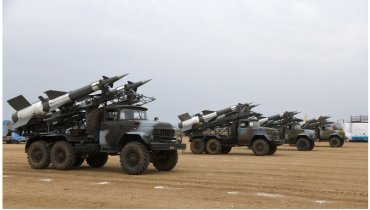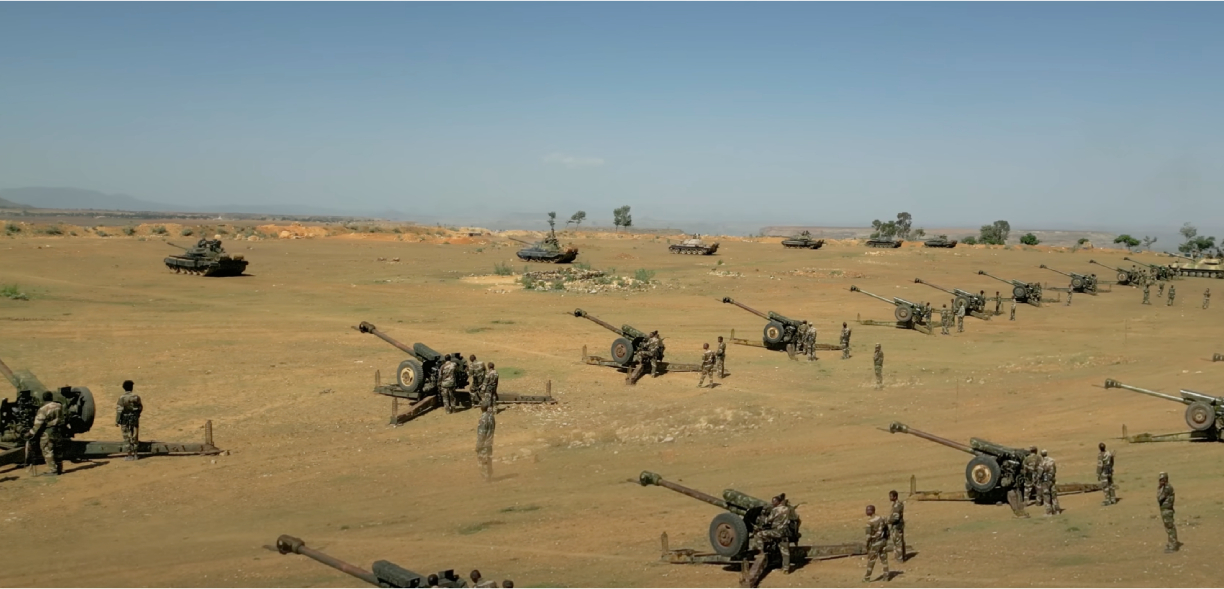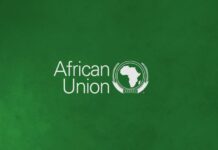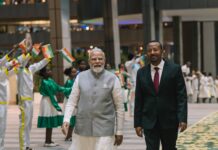Source: The Sentry
June 2025
The Eritrean Defense Forces Intervention in Tigray
In November 2018, the United Nations lifted sanctions on Eritrea, including a two-way arms embargo banning both the import and export of arms, after a successful campaign by Eritrea’s longtime rival, Ethiopia. As Eritrean President Isaias Afwerki and Ethiopian Prime Minister Abiy Ahmed Ali began to reestablish ties, having signed a formal peace agreement in September 2018, hope was high that this reset of regional relations would provide long-term security. That hope quickly faded as increasingly secret talks resulted in the military encirclement of Ethiopia’s Tigray region.
In the absence of the UN’s two-way arms embargo, the Eritrean Defense Forces (EDF) reequipped and rearmed, while its senior officers conspired with the newly configured Ethiopian security apparatus to launch the Tigray War in late 2020. The EDF played a prominent and highly problematic role in that conflict, committing atrocities in a campaign of collective punishment against the people of Tigray, at great human cost.
The Tigray War resulted in a humanitarian crisis of immense proportions. War crimes were perpetrated by all parties to the conflict, but the nature of atrocities and war profiteering carried out by the EDF was unmatched in scale and premeditation. The EDF engaged in massacres, widespread sexual violence, and systematic looting, including of Tigrayan factory machinery, medical supplies and equipment, and cultural antiquities.
Unembargoed: The Lifting of UN Sanctions on Eritrea*
On November 14, 2018, the United Nations Security Council lifted sanctions on Eritrea.
First imposed in 2009, the sanctions were primarily in response to reports that Eritrea was providing support to the Islamist insurgent group Al-Shabaab in Somalia in a proxy battle against Ethiopia.3 The two-way arms embargo established by the sanctions regime was intended to prevent Eritrea from both importing and exporting weapons, but it was never fully successful in stemming flows of military hardware. Between 2010 and 2018, when the embargo was lifted, UN monitors documented repeated violations in their annual reports to the Security Council.4, 5, 6 What’s more, Eritrea ignored repeated requests by the Security Council to cooperate and, from 2011 onwards, denied UN monitors access to the country.7 Nonetheless, while in place, the sanctions frustrated the Eritrean leadership’s persistent efforts to strengthen its defense forces and destabilize the Horn of Africa.
Eritrea’s path to the lifting of these sanctions was set by its neighbor and longstanding antagonist, Ethiopia. Abiy Ahmed Ali assumed the premiership in Ethiopia in April 2018, following four years of protests against a federal government dominated by the Tigrayan People’s Liberation Front (TPLF). Abiy represented a radically different style of leadership and politics, which many observers at the time viewed as a welcome change. Within months of taking office, he had reset relations with Eritrea. Reciprocal state visits soon followed. In September 2018, a formal peace agreement was signed by Abiy and Eritrean President Isaias Afwerki at a summit hosted by Saudi King Salman bin Abdulaziz Al Saud in Jeddah.
At the time, Ethiopia was serving a two-year term as a non-permanent UN Security Council member, having been elected to fill a seat beginning in January 2017. Prior to Abiy’s election, Ethiopia’s Permanent Mission had maintained a steadfast commitment to ensuring the continuation of sanctions on Eritrea, in accordance with the country’s foreign policy at the time. Soon after Abiy took office, however, this policy was reversed, and the Mission began lobbying for the lifting of sanctions—even before they were due to be reviewed by the Security Council in November 2018.
The lifting of sanctions was strongly supported by China and Russia, two of the permanent members of the Security Council. The other three permanent members—the United States, the United Kingdom, and France—initially supported a process of easing sanctions on the condition of greater compliance with previous UN resolutions. Eritrea’s facilitation of UN sanctions monitors visiting the country and conducting inves
tigations was considered among the most important stipulations of repeated resolutions.
As the date of the vote grew closer and momentum gathered in favor of lifting the sanctions, Eritrea’s allies pressured the Eritrean government to invite the coordinator of the UN monitoring team to a formal meeting as a gesture of cooperation with the Security Council. Eritrea ignored the pressure and continued to reject all Security Council stipulations, however, and in November 2018, the Security Council voted unanimously to lift all sanctions—despite concerns among some Member States over creating a potentially harmful precedent.
Preparing for War
Conflict erupted in Tigray on November 3, 2020. While this conflict was often framed as having been prompted by the TPLF when it attacked a Northern Command base within Tigray to capture arms, The Sentry has found a growing body of evidence that indicates Eritrea’s leaders played an active role in planning the war, anticipating the outbreak months before the first shots were fired and working with and through Ethiopia under its new and inexperienced prime minister to punish Tigray and the TPLF.
A common cause
The Tigray region represents both the primary connection between Eritrea and Ethiopia and, historically, the deepest dividing line between the two countries. Tigray is Ethiopia’s northernmost ethnic federal state, sharing its northern border with Eritrea. Its regional capital, Mekelle, is significantly closer to the Eritrean capital Asmara than to the Ethiopian capital Addis Ababa, and there are strong communal and linguistic ties between ethnic Tigrayan communities in Tigray and the Tigrinya groups in Eritrea.
Within Ethiopia, therefore, the immediate impact of the September 2018 peace agreement was most acute in Tigray. Border crossings that had previously been closed and heavily guarded on both sides were suddenly opened, briefly enabling free movement and the reunion of communities divided by national boundaries. By April 2019, however, Isaias had ordered the reclosure of the borders, and progress toward implementation of the peace agreement had stalled.
Despite the ties between Eritrea and Tigray, Eritrea’s president has long exhibited contempt for the region, and particularly for the TPLF, publicly referring to it using the derogatory Tigrinya term “Woyane.” Following Eritrea’s formal independence in 1993, relations with Ethiopia under the TPLF’s leadership quickly soured. Hatred toward the TPLF specifically, and Tigrayans generally, had festered in Eritrea’s leadership since its loss in the 1998-2000 border war and subsequent refusal to implement the findings of the Eritrea-Ethiopia
Boundary Commission (EEBC). This was then compounded by Ethiopia’s role in imposing and sustaining the UN sanctions regime. In the lead-up to the war, EDF leadership were reported to have increased anti-Tigrayan indoctrination of troops and trainees at the Sawa military camp—where Eritrean youth receive training as part of their compulsory and often indefinite National Service—framing Tigrayans as the principal source of Eritreans’ suffering since independence.
Animosity toward Tigrayans was clearly shared among various groups in Ethiopia, particularly the Amhara, prior to the protests that led to Abiy’s ascent, but it grew increasingly virulent as the demonstrations went on. In June 2018, less than two months after assuming the premiership, Abiy himself referred to Tigrayans as “daylight hyenas” in a live television broadcast. Isaias and Abiy thus established an alliance of convenience based on a common cause to propagate anti-Tigrayan sentiments and prevent the TPLF from returning to power.
Planning and armament
With sanctions lifted, Asmara swiftly turned to Moscow in pursuit of new military hardware. In August 2019, during the annual ceremony for National Service graduates at Sawa, the military proudly displayed what appeared to be newly acquired Russian-manufactured 9K35 Strela-10 and S-125 Neva/Pechora surface-to-air missile (SAM) systems.

In a radical departure from prior practice, Abiy’s military leaders began shipping weapons and personnel to Asmara directly. According to a senior TPLF official who had previously served as an ENDF officer, Ethiopian military cargo planes started flying to Eritrea from early 2020 onwards, transporting both troops and equipment. Researchers monitoring the conflict and given access to historical flight data from former Ethiopian Airlines staff were also able to confirm that irregular charter flights carried soldiers and military equipment
from Addis Ababa to Asmara on September 25, 2020, and October 20, 2020—prior to the outbreak of the conflict.

Command and control
Preparations for the EDF’s incursion into Tigray were commonly assumed to have been led by Chief of Staff General Filipos Woldeyohannes. Widely recognized as a close ally within Isaias’ ever-shrinking inner circle, Filipos was designated in 2021 by the US Department of the Treasury’s Office of Foreign Assets Control (OFAC) for his role in the conflict in Ethiopia. According to multiple testimonies, however, including from recently defected members of the EDF, the lesser-known Brigadier General Eyob Fessehaye, or “Halibay,” played a more prominent role than the chief of staff in the war preparations.
As planning for the invasion began, Halibay, who was reportedly commanding the Eritrean Special Forces, was promoted to be the head of the President’s Office of Military Affairs. With Filipos increasingly side-lined, Halibay assumed the principal role in coordinating the incursion, travelling frequently between Tigray and Asmara to report to Isaias.
Atrocities
The conflict in Tigray was marked by extraordinary violence. The scale and nature of the atrocities committed throughout the conflict, together with the rhetoric employed by a range of actors against ethnic Tigrayans, have led many to conclude that the conflict amounted to ethnic cleansing, even genocide.
While atrocities were committed by all parties in Tigray, the now well-documented atrocities committed by the EDF were exceptional in their scale and brutality and included extensive sexual violence. The Aksum massacre, likely the most significant single incident of violations of humanitarian law during the conflict, is illustrative of the approach adopted by the EDF throughout.
Aksum massacre
On November 19, 2020, elements of the ENDF and EDF deployed to the outskirts of the historic city of Aksum, around 187 km northwest of Mekelle. The troops shelled the city for several hours before entering unresisted. Witnesses interviewed by Amnesty International described how Eritrean troops began stopping civilians and checking their phones, summarily executing as suspected TPLF supporters those whose phones held party propaganda.
The events that led to the massacre on November 28-29, 2020, remain unclear, with reporting differing significantly among different actors. According to the findings of an official—yet problematic—investigation led by the Ethiopian Federal Government, an estimated 1,500 youth in the city had received basic training from the TPLF before the arrival of troops on November 19. On November 27, these youth—backed by
“TPLF Special Forces and militia”—revolted against the occupying force, using weapons stolen from the ENDF Northern Command, according to the official findings. Amnesty International’s reporting, however, indicates that a relatively small number of pro-TPLF militia attacked an Eritrean base established on the Mai Koho hillside to the north of the city that morning and that a number of the city’s residents then joined the fight with rudimentary weapons, while many others cheered in support.
Sexual violence
Extreme sexual violence was prevalent throughout the conflict in Tigray: Rape, gang rape, torture, and mutilation were widespread. According to a study conducted for the BMJ Global Health journal, almost 10% of women surveyed in Tigray experienced sexual violence during the conflict—500 of 5,171—marking a higher incidence of rape than was seen in relatively recent periods of conflict in Sierra Leone (8%), Northern Uganda (4.2%), and Ukraine (2.6%).105 The survey did not include Western Tigray or districts bordering Eritrea, where the conflict was ongoing at the time, leading the authors to claim that the findings were likely “an underestimation of the true extent of SGBV [sexual and gender-based violence] in Tigray as a result of the war.” Human Rights Watch, Amnesty International, and the Commission of Inquiry on Tigray Genocide (CITG), a body established by the Tigrayan authorities in May 2022, reached similar conclusions.
While this violence was perpetrated by all parties to the conflict, “most sexual and physical violence was committed by Eritrean defence forces,” the BMJ Global Health study noted. Members of the CITG told The Sentry that almost 74% of all incidents of sexual and gender-based violence they recorded prior to May 2024 had been perpetrated by the EDF. The CITG further noted that Eritrean troops were disproportionately accountable for incidents of particularly brutal sexual violence, including captivity, rape with foreign objects,
gang rape, and incidents in which women threatened with rape claimed to be HIV positive following which HIV-positive soldiers were called to commit the rape.







